Consider Section 529 tax-advantaged plans for saving
According to a report published by the Education Data Initiative, the average cost of college tuition and fees at public four-year institutions rose 179.2% from academic year 2000-2001 through academic year 2019-2020.
This rise represented an average annual increase of 9% and outpaced the rate of inflation by 171.5%. The total cost of college attendance includes tuition and fees, room and board, books and supplies, transportation and personal expenses. All these expenses should be factored into your budget when planning for college costs, keeping in mind that scholarships, need-based aid and merit aid can help reduce the cost of attendance.
After factoring in aid, it should be clear what portion of college costs your family will have to pay. Fortunately, there are options to help fund your child’s college education.
529 Plans
These tax-advantaged savings plans are authorized by Section 529 of the Internal Revenue Code. All 50 states and the District of Columbia sponsor at least one type of 529 plan. There are two types of 529 plans available — prepaid tuition plans and education savings plans. With prepaid tuition plans, the account holder purchases credits at current prices at participating colleges and universities for future tuition and fees for the beneficiary. Prepaid tuition cannot be used to pay for future room and board expenses.
Alternatively, education savings plans allow an account holder to open an investment account in order to save for a beneficiary’s future tuition, mandatory fees, room and board.
Withdrawals from an education savings plan can be used at any college or university, including some colleges and universities outside the U.S. Unlike prepaid tuition plans, education savings plans can also be used to pay for tuition at any public, private or religious elementary or secondary school.
There are fees and expenses associated with 529 plans, although some states offer fee reductions if the account holder elects electronic delivery of documents or enrolls online.
Special tax benefits vary by state and the 529 plan chosen, but one tax advantage of 529 plans is that earnings grow tax-free over a period of time.
Federal loans
There are strict eligibility requirements for students under 24 years of age who file the Free Application for Federal Student Aid (FAFSA) on their own. For all others, parents are responsible for completing a portion of the FAFSA on behalf of their dependent, including income disclosure, assets and other financial information.
While the FAFSA will ultimately determine how much aid a child will receive in the form of grants and federal loans, a family can borrow up to the total cost of tuition at a low, fixed interest rate. For undergraduate students with a loan dispensed after July 1, 2022, the interest rate for Direct Subsidized Loans, in addition to Direct Unsubsidized Loans, has been and remains 4.99%.
Private loans
After grants, scholarships and federal loans have been determined, you may need more funds to cover the total cost of your child’s college education. That’s when you might want to consider private student loans.
Private student loans can be applied for as a loan taken out in the parent’s name, or you can cosign your child’s loan. Interest rates and repayment terms will be determined by the lender, since private loans are not government issued. Unlike federal loans, there’s no deadline in which to apply for a private loan and amounts borrowed can generally be much more than what is allowed with federal loans.
The cost of a college education continues to rise. The Biden administration’s student loan forgiveness plan is stuck in judicial limbo, and the pause on student loan debt payments may also be ending. Students who graduate with large amounts of debt may have to delay life milestones like owning a house or getting married. Investigating all options is the best way to ensure that your child graduates with as little debt as possible.
About This Author

Alpine Bank Staff
Alpine Bank is an independent, employee-owned organization with headquarters in Glenwood Springs and banking offices across Colorado’s Western Slope, mountains and Front Range.
More about Alpine Bank Staff


